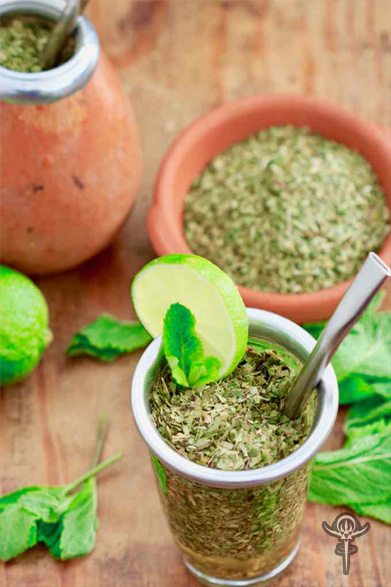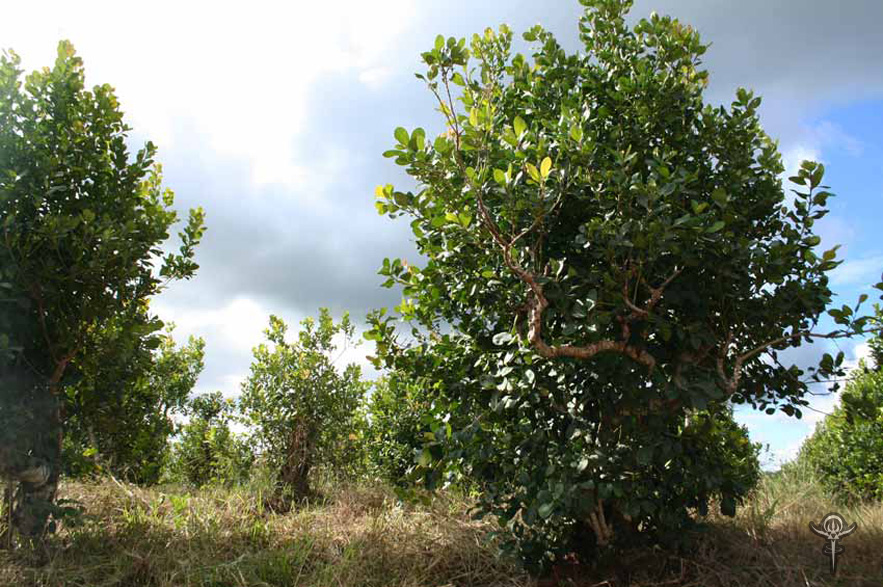
Lemon balm
April 16, 2019
Protected: 88/8: EXTREME WEIGHTLOSS PROTOCOL
April 17, 2019Yerba Mate

This herb is used in various energy drinks that you find on the market. It's name translates to "Mate Herb" which means "Infusion of an Herb". It can grow to be 49 ft tall and it's leaves can be as wide as 2.2 inches. If you see the flowers they are a white and green color that contains four different petals.
They only harvest the seeds between January and April when the seeds have turned a dark purple. When they harvest the herb it is dunked in water to remove the floating seeds and extra particles.

Benefits of Yerba Mate
Their phenolic profiles were characterized by direct infusion electrospray insertion mass spectrometry (ESI-MS) and their free radical scavenging activity was determined by the DPPH assay.
The ethanolic extracts from yerba maté, both roasted and green, with lower content of phenolic compounds (3.80 and 2.83 mg/mL) presented high antioxidant activity and even at very low phenolic concentrations, ether extract from GT (0.07 mg/mL) inhibited DPPH over 90%.
Anti-Obesity - The aim of the present study was to evaluate the effects of Yerba Mate extract on weight loss, obesity-related biochemical parameters, and diabetes in high-fat diet-fed mice.
To this end, by using in vivo animal models of dietary-induced obesity, we have made the interesting observations that Yerba Mate has the ability to decrease the differentiation of pre-adipocytes and to reduce the accumulation of lipids in adipocytes, both of which contribute to a lower growth rate of adipose tissue, lower body weight gain, and obesity.
In vivo effects of Yerba Mate on lipid metabolism included reductions in serum cholesterol, serum triglycerides, and glucose concentrations in mice that were fed a high fat diet.
Yerba Mate can potentially be used to treat obesity and diabetes.
Energy Booster - Ingesting Yerba Maté (YM) has become widely popular for health promotion, obesity prevention and body weight reduction, primarily due its thermogenic effectiveness.
However, the YM effects on fat metabolism during exercise, when fat metabolism is already increased several fold, are unknown. The present study investigated whether acute YM ingestion augments fat metabolism parameters of fatty acid oxidation (FAO) and energy expenditure derived from FAO (EEFAO) during exercise with several intensities.
Acute YM ingestion augments the exercise dependent increase in FAO and EEFAO at submaximal exercise intensities without negatively affecting maximal exercise performance, suggesting a potential role for YM ingestion to increase the exercise effectiveness for weight loss and sports performance.
The behavioral and polyphenolic profiles of the yerba mate samples were also evaluated. Infusions of yerba mate (50 mg/kg) or distilled water were given to rats for fifteen days by oral gavage.
These data indicate that yerba mate may provide new perspectives for the development of therapeutic approaches with natural compounds in the pharmaceutical area, both to reduce the convulsions’ frequency and to minimize the neuronal damage associated with recurrent seizures.
Osteoporosis - From a program for osteoporosis prevention and treatment, postmenopausal women who drank at least 1 L of Yerba Mate tea daily during 4 or more years (n = 146) were identified, and matched by age and time since menopause with an equal number of women who did not drink Yerba Mate tea.
Their bone mineral density (BMD) was measured by dual-energy X-ray absorptiometry (DXA) at the lumbar spine and femoral neck. Yerba Mate drinkers had a 9.7% higher lumbar spine BMD.
In multiple regression analysis, Yerba Mate drinking was the only factor, other than body mass index, which showed a positive correlation with BMD at both the lumbar spine (p < 0.0001) and the femoral neck (p = 0.0028). Results suggest a protective effect of chronic Yerba Mate consumption on bone.
Cardioprotective - Our objective was to compare the antioxidant properties and cardiovascular effects in ischemia–reperfusion of leaves aqueous extracts of Ilex brasiliensis (B) and Ilex paraguariensis (P).
In vitro systems were used to assess the antioxidant properties of the extracts. Isolated rat hearts were treated with both extracts before ischemia and myocardial function was assessed.
The present study demonstrates that an aqueous extract of I. brasiliensis, similar to I. paraguariensis, protects the myocardium against ischemia–reperfusion injury and attenuates oxidative damage. These effects may be attributed to the potent antioxidant properties of the extract.

Related Products











